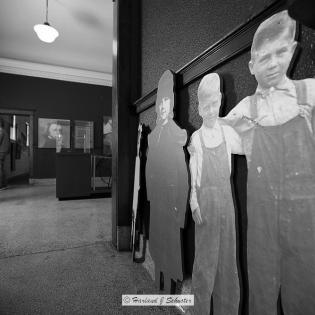If I Had A Million Dollars
Students select an issue area and research on the Internet, specifically the Learning to Give briefing papers to identify philanthropists and philanthropic organizations who have an interest in addressing that issue. Using the information gained from research, students write a persuasive letter to a philanthropist or philanthropic organization in support of a worthwhile cause in the community.
The learner will:
- research and describe the work of philanthropists and philanthropic organizations.
- write a persuasive letter in support of a worthwhile cause in the community.
- Access to the Internet for research about philanthropists: http://www.learningtogive.org/teach/briefing-papers
- Student copies of the handouts: Question Sheet and Parent Survey
Send home Parent Survey about familiar philanthropic resources and causes in the area.
Instructions
Anticipatory Set:
Tell students, "You have probably have seen or heard about the television show 'Who Wants to Be a Millionaire?'. If you had a million dollars, what would you do with it?" Give students five minutes to write on this topic. Discuss answers with the large group and write comments on the board.
Have students imagine they are a multimillionaire and want to contribute money to a worthwhile cause to benefit the common good. In other words, they are a philanthropist. Remind them of other philanthropists they've learned about.
Brainstorm some causes/needs in the community the students care about. What could be better related to poverty, justice and fairness, hunger, the environment, education. or other issues? Ask them to think about how a gift to this cause could benefit the common good.
Students will then vote for the issue that interests them most. Remind them that we won’t always have everybody agree so we have to go with a majority.
Once an issue has been decided, work with the class to come up with a list of organizations in the community/state that address that need.
Give students access to the briefing papers on the Learning to Give website (under the Professional Development menu). They may scan the people, organizations, and concepts related to philanthropy. Students will research philanthropists or philanthropic organizations that have focused on their area of interest. (They will use the information collected to later write a persuasive letter urging support for a community need or a cause that interests them.)
Have students work with a partner to fill out the Question Sheet for one philanthropist or philanthropic organization. At the end of 15-20 minutes, do a check-in to make sure students are getting information. Give more time, as needed.
After researching the information, students should write their persuasive letters (you might need a mini lesson review regarding the elements of a persuasive paragraph). Students will use the information from their question sheets and write to gain support for their cause. The letter should state the philanthropic cause and include an explanation of why it is worthwhile and deserves support or funding. These letters may be posted on social media or sent directly to individuals or organizations who might contribute.
Handouts
Philanthropy Framework
-
Strand PHIL.I Definitions of Philanthropy
-
Standard DP 05. Role of Foundations
-
Benchmark MS.1 Name at least one grant-making foundation and generally describe its purpose.
-
Benchmark MS.3 Describe how individuals and organizations can use a foundation for giving.
-
-
-
Strand PHIL.II Philanthropy and Civil Society
-
Standard PCS 07. Skills of Civic Engagement
-
Benchmark MS.2 Discuss a public policy issue affecting the common good and demonstrate respect and courtesy for differing opinions.
-
-
-
Strand PHIL.IV Volunteering and Service
-
Standard VS 01. Needs Assessment
-
Benchmark MS.1 Identify a need in the school, local community, state, nation, or world.
-
-
